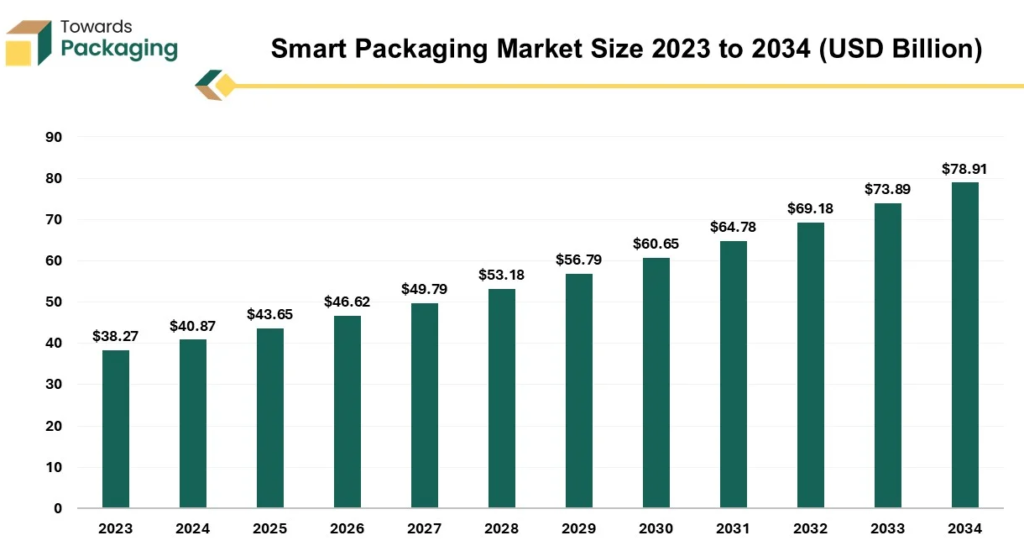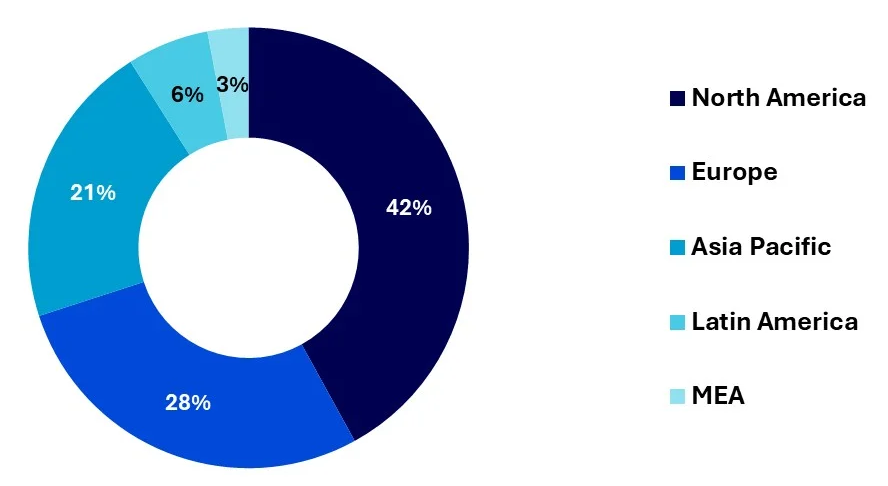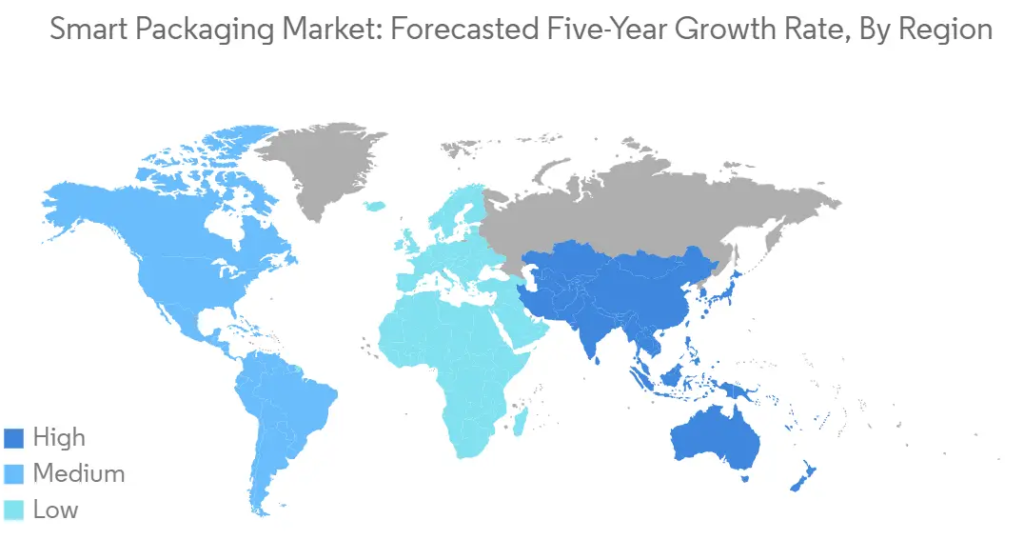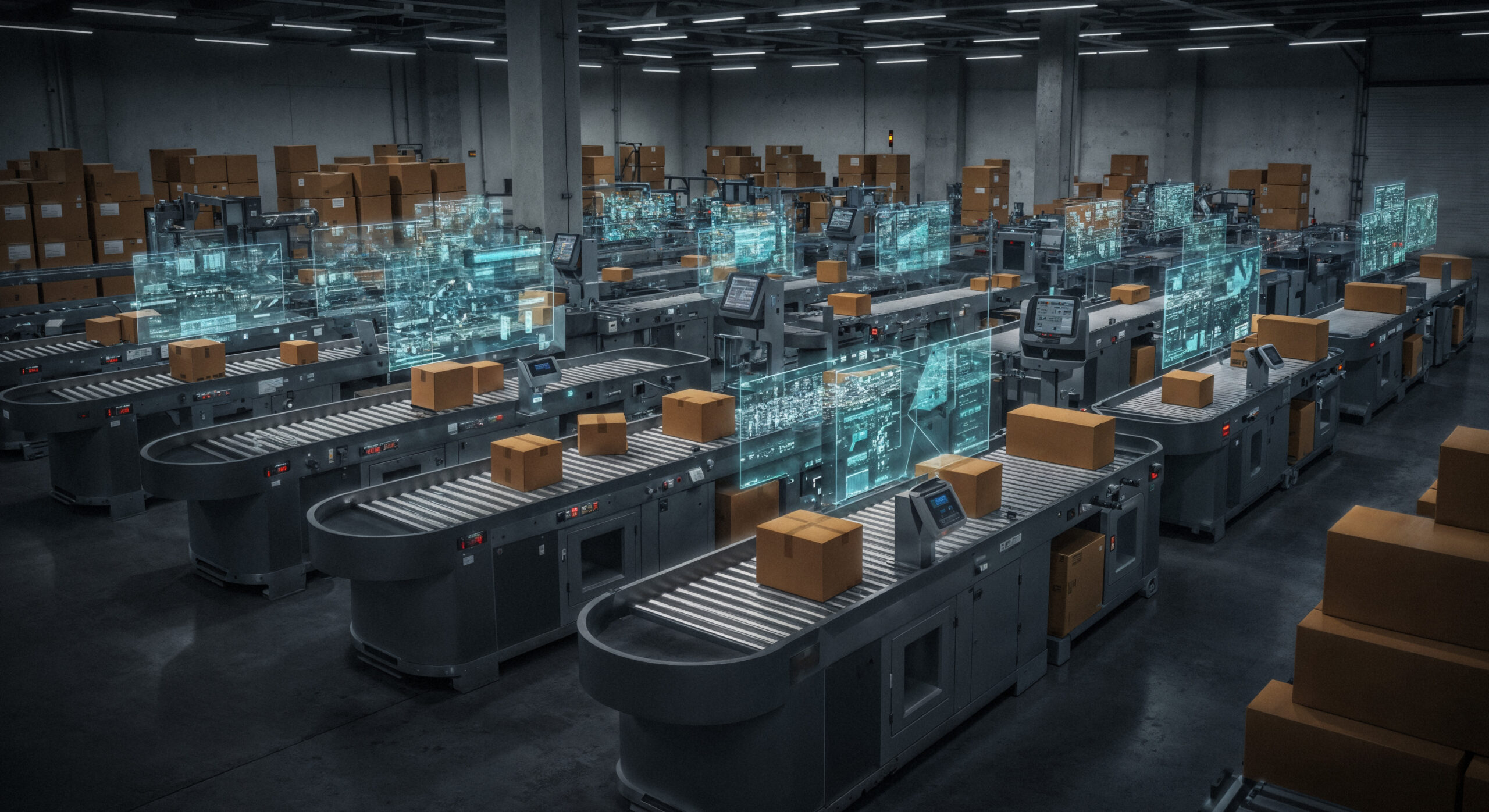Packaging is no longer just a simple container; it’s transforming into a smart, data-producing tool. This change is driven by the integration of digital technologies like the Internet of Things (IoT), RFID, and AI, which connect each product to the global supply chain. The market for this “smart packaging” was worth about $30 billion in 2024 and is expected to grow to nearly $80 billion by 2034. This growth is fueled by the boom in online shopping, consumers’ desire for honest information about products, and the urgent need to stop fake goods, making real-time tracking essential for a strong and competitive supply chain.

According to Toward Packaging’s report, the worldwide market for smart packaging is projected to increase substantially, from an estimated USD 43.65 billion in 2025 to USD 78.91 billion by 2034. This represents a compound annual growth rate (CAGR) of 6.8% over this nine-year period. Key factors fueling this growth include the widespread integration of IoT and sensor technologies, as well as rising consumer expectations for product transparency, traceability, and sustainability. The continued rise of online shopping and stricter government regulations concerning food safety and the integrity of pharmaceuticals are also significant contributors to this market expansion. In 2024, North America held the largest share of the smart packaging market. Looking ahead, the Asia Pacific region is anticipated to experience rapid growth. In terms of product type, active packaging was the leading category in 2024, while the food and beverages sector was the primary application for smart packaging in the same year.

Source: The Role of Real-Time Tracking in Shipping and Logistics, ILS; How IoT has Enhanced Supply Chain Visibility, Digital Matter;
The foundation of the smart tracking ecosystem is a “stack” of complementary technologies that provide comprehensive visibility. This includes Radio Frequency Identification (RFID) for automated, high-volume scanning without a direct line of sight, and QR codes which offer a low-cost, universally scannable link to digital information via smartphones. For real-time location, Global Positioning System (GPS) delivers precise outdoor tracking, while Wi-Fi, Cellular, and Bluetooth Low Energy (BLE) ensure continuous monitoring indoors or within confined spaces. Beyond location, a suite of Internet of Things (IoT) sensors monitors the product’s condition—tracking temperature, humidity, shock, and tampering to guarantee quality and security. The true power of this ecosystem lies not in any single technology, but in software platforms that fuse these disparate data streams into one coherent, detailed digital record of the shipment’s entire journey.
The smart logistics system relies on different types of packaging technology. Active packaging, the most common type, helps products last longer with features like oxygen absorbers. Intelligent packaging, which is the fastest-growing type, uses sensors to check and report a product’s condition, such as its temperature. Connected packaging uses QR codes and NFC to communicate directly with consumers for things like proving a product’s authenticity and marketing. These technologies are supported by digital identifiers, IoT sensors, and blockchain to securely track a product’s journey. However, the high cost of implementation, difficulties in integrating with old systems, data security concerns, and the environmental impact of adding electronics to packaging are significant obstacles to wider adoption.

Source: Smart Packaging Market Size, Share, and Trends 2024 to 2034, Precedence Research
According to Mordor Intelligence report, the United States is the leader in the North American smart packaging market, holding about 84% of the market share in 2024. This dominance is supported by supportive government regulations and a significant emphasis on sustainability. The U.S. is at the forefront of applying new packaging technologies, especially in the food and healthcare sectors. The demand for track-and-trace solutions, driven by laws like the Drug Supply Chain Security Act, is fueling strong growth in the pharmaceutical packaging segment. Europe’s smart packaging market is advanced, shaped by a strong focus on environmental issues and new technologies. Key markets like Germany, the UK, and France each play a unique role in the industry’s expansion. A major driver in this region is the use of smart packaging to decrease food waste, which is backed by various EU programs and rules. The adoption of technologies such as RFID, NFC, and smart labels is widespread across different industries.

Source: Mordor Intelligence
The Asia-Pacific region has a vibrant and quickly growing market for smart packaging, with major economies like China, Japan, and India. The market’s significant growth is fueled by expanding cities, greater consumer knowledge, and technological progress. Different countries in the area contribute distinct advantages, leading to varied adoption rates across industries. The region excels in active packaging, smart labels, and RFID technology. China is the frontrunner in the Asia-Pacific smart packaging market, propelled by its huge pharmaceutical industry and a heightened concern for food safety. The nation’s smart packaging industry is boosted by fast technological development and government backing through programs such as ‘Made in China 2025’. The market is particularly strong in pharmaceutical packaging, solutions for reducing food waste, and supply chain management.
Article by: Asst. Prof. Suwan Juntiwasarakij, Ph.D., Senior Editor & MEGA Tech

